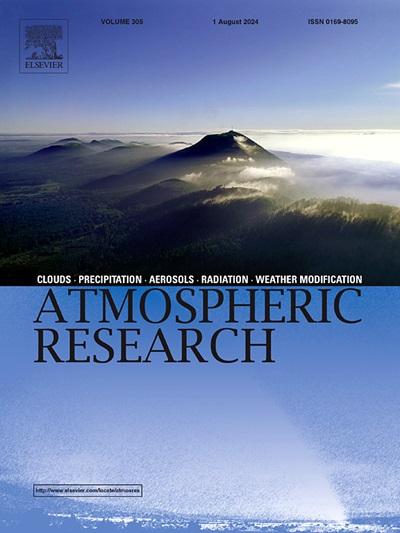Variability of solar radiation and cloud cover in the Antarctic Peninsula region
IF 4.5
2区 地球科学
Q1 METEOROLOGY & ATMOSPHERIC SCIENCES
引用次数: 0
Abstract
Solar radiation is a key driver of many physical, chemical and biological processes in Antarctic ecosystems and the main component of the surface energy budget. The downward shortwave radiation (DSR) flux varies greatly in the Antarctic Peninsula region due to cloud cover changes, resulting from climate differences between eastern and western coasts. The DSR intensity was measured using A-class pyranometers at the J.G. Mendel (JGM) station located on the northeastern part of the Antarctic Peninsula and at the King Sejong (KSJ) station located on the western part for the period 2011–2016. The influence of the cloud cover on the DSR flux was evaluated using the cloud modification factor calculated for both stations. The effect of surface pressure, water vapour, albedo, cloud cover, ozone and solar zenith angle was examined using partial correlation. We found a 29 %-higher DSR intensity at the JGM station, while the cloud cover was higher at the KSJ station, with a 28 %-lower cloud modification factor compared with the JGM station. At both stations, the DSR variability was affected mainly by the solar zenith angle, followed by cloud cover at the JGM station, whereas the influence of cloud cover and water vapour was similar at the KSJ station. The effect of the albedo was significant for most of the year at the JGM station but only in the winter at the KSJ station. These results reveal significant differences in climate conditions between the western and eastern coasts, which are reflected in local atmospheric and cryospheric processes.
求助全文
约1分钟内获得全文
求助全文
来源期刊

Atmospheric Research
地学-气象与大气科学
CiteScore
9.40
自引率
10.90%
发文量
460
审稿时长
47 days
期刊介绍:
The journal publishes scientific papers (research papers, review articles, letters and notes) dealing with the part of the atmosphere where meteorological events occur. Attention is given to all processes extending from the earth surface to the tropopause, but special emphasis continues to be devoted to the physics of clouds, mesoscale meteorology and air pollution, i.e. atmospheric aerosols; microphysical processes; cloud dynamics and thermodynamics; numerical simulation, climatology, climate change and weather modification.
 求助内容:
求助内容: 应助结果提醒方式:
应助结果提醒方式:


